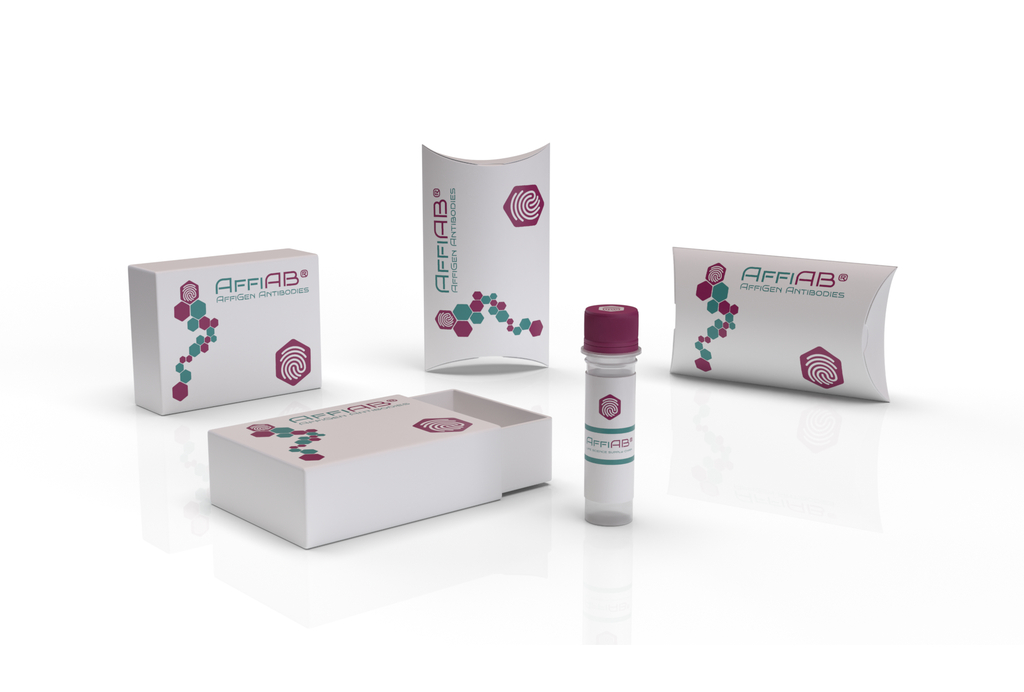AffiAB® Anti-FBXW7 Antibody
This gene encodes a member of the F-box protein family which is characterized by an approximately 40 amino acid motif, the F-box. The F-box proteins constitute one of the four subunits of ubiquitin protein ligase complex called SCFs (SKP1-cullin-F-box) , which function in phosphorylation-dependent ubiquitination. The F-box proteins are divided into 3 classes: Fbws containing WD-40 domains, Fbls containing leucine-rich repeats, and Fbxs containing either different protein-protein interaction modules or no recognizable motifs. The protein encoded by this gene was previously referred to as FBX30, and belongs to the Fbws class; in addition to an F-box, this protein contains 7 tandem WD40 repeats. This protein binds directly to cyclin E and probably targets cyclin E for ubiquitin-mediated degradation. Other well established pro-proliferative targets of FBXW7 are c-Myc and Notch1. Mono-allelic mutations in this gene are detected in sporadic cancers [e.g., cholangiocarcinoma (35%) , T-ALL (31%) , endometrial carcinoma (16%) , colorectal carcinoma (16%) , bladder cancer (10%) , gastric carcinoma (6%) , lung squamous cell carcinoma (5%) , etc.] . These findings implicate the gene's potential role in the pathogenesis of human cancers. Despite being commonly acknowledged as a haploinsufficient tumor suppressor, mutations are not found in some cancers, such as acute myeloid leukemia and multiple myeloma. One possibility is that FBXW7 substrate stabilization is detrimental in these neoplasms. For example, the FBXW7 substrate C/EBPα suppresses AML [8] and multiple myelomas require constitutive NF-κB signaling; therefore, disruption of FBXW7-mediated ubiquitylation of IκBd in these tumors results in cell death.
Antibody type
Rabbit polyclonal Antibody
Uniprot ID
SwissProt: Q969H0 Human; SwissProt: Q8VBV4 Mouse; SwissProt: D3Z902 Rat
Recombinant
NO
Conjugation
Non-conjugated
Host
Rabbit
Isotype
IgG
Clone
N/A
KO/KD
N/A
Species reactivity
Human, Mouse, Rat
Tested applications
WB, IF-Cell, FC, IHC-P
Predicted species reactivity
N/A
Immunogen
Recombinant protein within human FBXW7 aa 84-327.
Storage
Store at +4°C after thawing. Aliquot store at -20°C or -80°C. Avoid repeated freeze / thaw cycles.
Form
Liquid
Storage buffer
1*PBS (pH7.4) , 0.2% BSA, 50% Glycerol. Preservative: 0.05% Sodium Azide.
Concentration
1 mg/mL.
Purity
Immunogen affinity purified.
Signal pathway
N/A
Recommended dilutions
WB: 1:500-1:1, 000; IF-Cell: 1:500-1:2, 000; FC: 1:50-1:100; IHC-P: 1:50-1:200
Molecular Weight
Predicted band size: 80 kDa
Subcellular location
Cytoplasm. Nucleus.
Positive control
Mouse spleen tissue lysate, rat lung tissue lysate, HepG2 cell lysate, HUVEC, SH-SY5Y.
